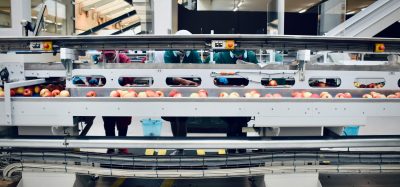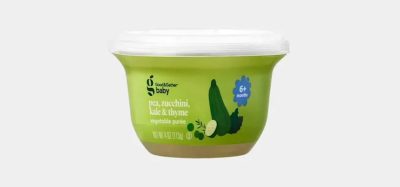FDA announces draft guidance for processed baby foods
- Like
- Digg
- Del
- Tumblr
- VKontakte
- Buffer
- Love This
- Odnoklassniki
- Meneame
- Blogger
- Amazon
- Yahoo Mail
- Gmail
- AOL
- Newsvine
- HackerNews
- Evernote
- MySpace
- Mail.ru
- Viadeo
- Line
- Comments
- Yummly
- SMS
- Viber
- Telegram
- Subscribe
- Skype
- Facebook Messenger
- Kakao
- LiveJournal
- Yammer
- Edgar
- Fintel
- Mix
- Instapaper
- Copy Link
Posted: 25 January 2023 | Grace Galler | No comments yet
Aiming to help reduce potential health effects for babies and children under two, the FDA has announced action levels for lead categories of processed baby foods.


The US Food and Drugs Administration (FDA) has announced draft guidance for the food industry on action levels for lead in processed baby foods.
Hoping to reduce potential health effects for babies and children under the age of two, the FDA has said that the proposed action levels “would result in significant reductions in exposures to lead from food while ensuring availability of nutritious foods”.
The action is part of Closer to Zero, a science-based approach that seeks to continually reduce exposure to lead, arsenic, cadmium and mercury to the lowest possible levels in foods eaten by babies and young children.
“For more than 30 years, the FDA has been working to reduce exposure to lead, and other environmental contaminants, from foods,” said FDA Commissioner Robert M. Califf.
“This work has resulted in a dramatic decline in lead exposure from foods since the mid-1980s. The proposed action levels announced today, along with our continued work with our state and federal partners, and with industry and growers to identify mitigation strategies, will result in long-term, meaningful and sustainable reductions in the exposure to this contaminant from foods.”
The FDA has estimated that for babies and young children that eat the foods covered in the current draft guidance, action levels could result in as much as a 24-27 percent reduction in exposure to lead.
The foods covered by the new draft guidance (Action Levels for Lead in Food Intended for Babies and Young Children) include processed foods, such as food packaged in jars, pouches, tubs and boxes.
The draft guidance contains the following action levels:
- 10 parts per billion (ppb) for fruits, vegetables (excluding single-ingredient root vegetables), mixtures (including grain and meat-based mixtures), yogurts. custards/puddings and single-ingredient meats.
- 20 ppb for root vegetables (single ingredient).
- 20 ppb for dry cereals.
The FDA has said that these action levels are to be achievable when measures are taken to minimise the presence of lead and expects that industry will strive for continual reduction of this contaminant. Action levels are one regulatory tool the FDA uses to help lower levels of chemical contaminants in foods when a certain level of a contaminant is unavoidable, for example due to environmental factors.
To identify the action levels for categories of foods, the agency considered, among other factors, the level of lead that could be in a food without dietary exposure exceeding the FDA’s Interim Reference Level, a measure of the contribution of lead in food to blood lead levels.
Comparing processed bay foods to fruits, vegetables and grain crops that “readily absorb vital nutrients from the environment, these foods also take up contaminants, like lead, that can be harmful to health”.
The FDA has made it clear that the presence of a contaminant does not mean the food is unsafe to eat. Instead it evaluated the level of the contaminant in the food and exposure based on consumption to determine if the food is a potential health risk.
FDA writes to manufacturers over toxic contaminants in baby food
Stating it is not possible to remove these elements entirely from the food supply, the FDA expects that the recommended action levels will cause manufacturers to implement agricultural and processing measures to lower lead levels in their food products below the proposed action levels, thus reducing the potential harmful effects associated with dietary lead exposures.
The FDA has said that “although not binding”, it would “consider these action levels, in addition to other factors, when considering whether to bring enforcement action in a particular case”.
“The action levels in today’s draft guidance are not intended to direct consumers in making food choices. To support child growth and development, we recommend parents and caregivers feed children a varied and nutrient-dense diet across and within the main food groups of vegetables, fruits, grains, dairy and protein foods,” said Susan Mayne, Ph.D., Director of the FDA’s Center for Food Safety and Applied Nutrition.
“This approach helps your children get important nutrients and may reduce potential harmful effects from exposure to contaminants from foods that take up contaminants from the environment.”
The FDA has said that it is set to host a webinar to provide an overview of the draft guidance and answer stakeholder questions.
Related topics
Food Safety, Health & Nutrition, Quality analysis & quality control (QA/QC), Regulation & Legislation, Research & development, retail, The consumer, Trade & Economy









